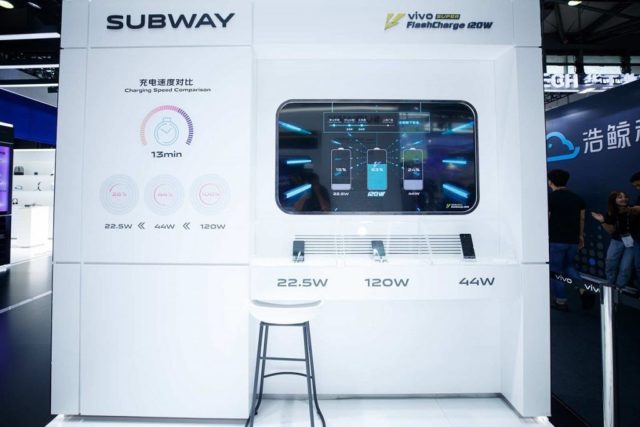Recently, the news of Vivo 120W Super FlashCharger which can power a 4,000 mAh battery in 13 minutes is on everyone’s lips. It sounds unreal, but it is.
While it is not the first supercharge tech, it is one of its kind. According to reports it would be the world’s fastest charging tech for smartphones.
Although no further details were revealed about the Super FlashCharge 120W technology. A Vivo product manager released a video on the Chinese social media platform Weibo. This video teased about the product.
Furthermore, Vivo has not yet disclosed how they achieved this feat. Also, it is still a mystery how they developed the 120W super Flashcharge.
It is also not really clear when this technology would be introduced into a commercially available smartphone.
Remember that OnePlus was the first one to bring a 20W fast charge tech. In addition, it hit the 30W mark last year with the OnePlus 6T McLaren Edition.
Soon after, Huawei built a 40W on the Mate 20 Pro. Not long after, the Oppo Find X released a 50W SuperVOOC fast charging.
The new tech was unveiled today at Mobile World Congress Shanghai 2019. Vivo also showed their latest cutting-edge innovation. This included several 5G enabled smart devices and various new applications. As well as new technology breakthrough, demonstrating their commitment to empowering the next-generation of mobile experience.

Features of the Vivo 120W FlashCharge
The Super FlashCharge 120W features a new charge pump technology with a deeply customizable Type-C data cable and travel charger. It can realisw up to 120W ultra-high power charging (20V/6A).
According to the data from lab test, Vivo Super FlashCharge 120W takes only 5 mins to charge a 4,000mAh battery from 0 to 50%, and can fully charge the smartphone in just 13 minutes. Furthermore, this ground-breaking technology now allows users to quickly top-up their smartphone battery and fully enjoy their mobile-enabled smart living.
Via Liliputing and GSM Arena

Tiwalade Joanna Okedara is a content writer, and blogger, with a passion for all things tech. She also specialises in writing SEO content, and spends most of her time researching new content marketing strategies. She loves to cook, and plan events in her spare time
Support CNX Software! Donate via cryptocurrencies, become a Patron on Patreon, or purchase goods on Amazon or Aliexpress






Everybody stand back! 120 Watts is no joke.
It’s just 28A at 4.2V. So it’s charging at something like 7C. I want to see the cables. 😀
This is crazy sauce. Ohmic resistance alone makes this a very bad idea.
Fancy.
What about battery life?
Faster charging less cycles.
Today most recommend not to use qc2 qc3 and so fpr charing battery… It will decrease capacity faster than slow charging….
It would be nice for the vendor… Faster smartphone change due dead battery. Lol
2Ah in 5 minutes? So 24A into the battery? That’s “just” 6C. That’s trivial, for a capacitor ?. On the other had, a capacitor bank that can hold 2Ah of charge at even 48V is ENORMOUS.
As for LiIon batteries, 6C, even just to 50% SOC will kill things right quick in a hurry unless this includes some serious advances in battery tech.
And, of course, there is the issue of getting power into the phone. 24A into the battery at an average voltage of, say 3.5v is 84W. USB-PD maxes out at 20V, which would work out to 4.2A. That’s workable through a USB-C connector. The problem is that it needs to be bucked down to battery voltage. From a quick look at TIs synchronous buck converters, 95% efficiency is the most you could hope for at those currents and voltage drops. Thats 4.2W of heat dissipated in the phone, on top of the 20+w resistive heating of charging current into the battery.
Sounds like a BS stunt.
It might be more workable if the “4000mAh” battery is actually an “4000mAh equivalent” battery, ie, a 14.8V battery of 1000mAh holding the same amount of energy, in Wh, as a 4000mAh 3.7v battery. Charging currents would be decreased to a quarter, reducing waste heat to 1/16th, and converter efficiency will be higher due to the smaller voltage drop.
I’m still dubious.
Yeah something here’s fishy, there’s no way that tiny cable could handle that amperage. Article reads a lot like a press release also
A rewritten press release, but it’s pretty hard to make something make sense that makes no sense at all in absolute terms.
Correction: This is still completely crazy for a 14.8v, 14.8Wh battery.
Charging current would still be 6C, and even 5W of ohmic heating of the battery is considerable.